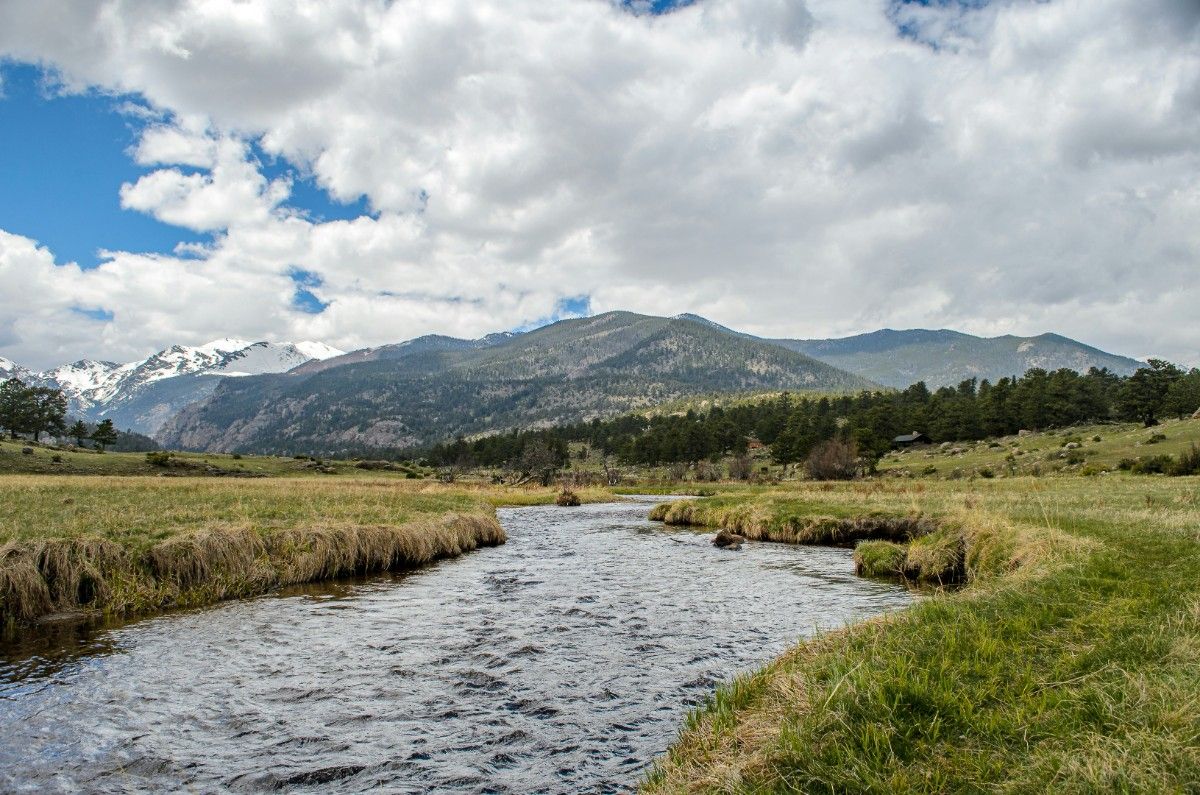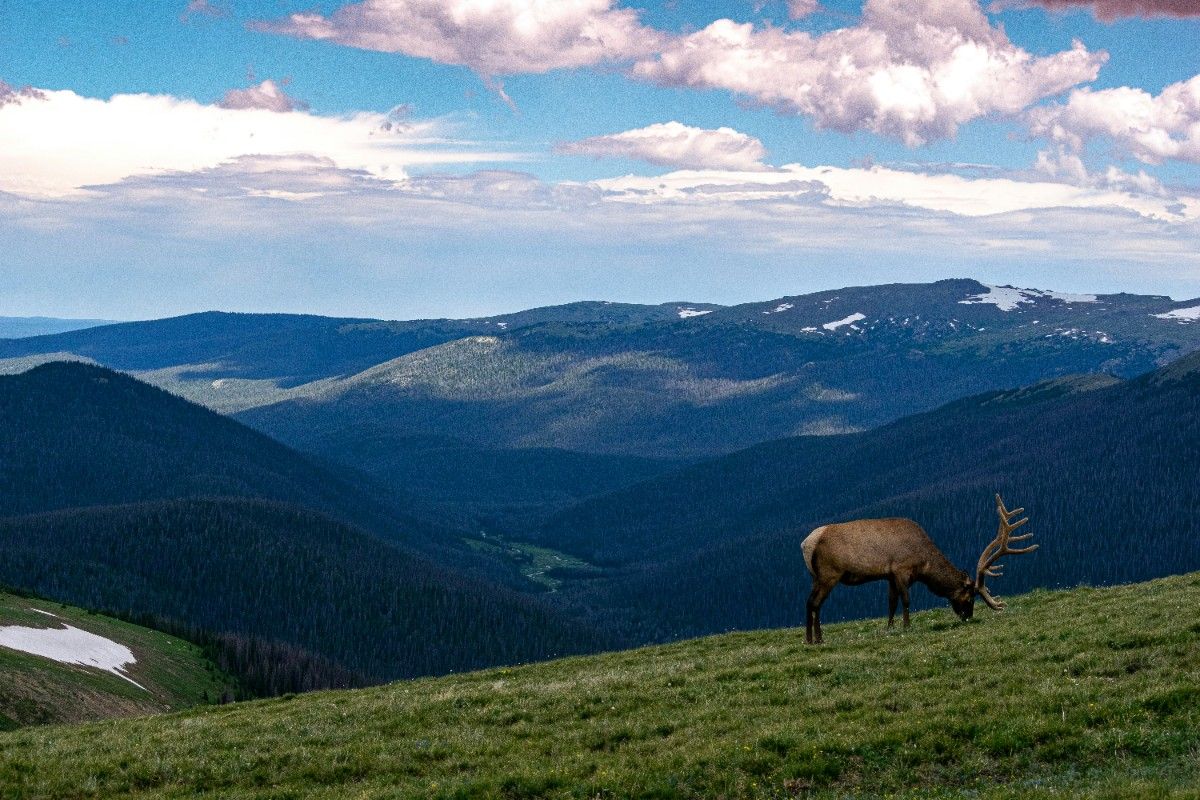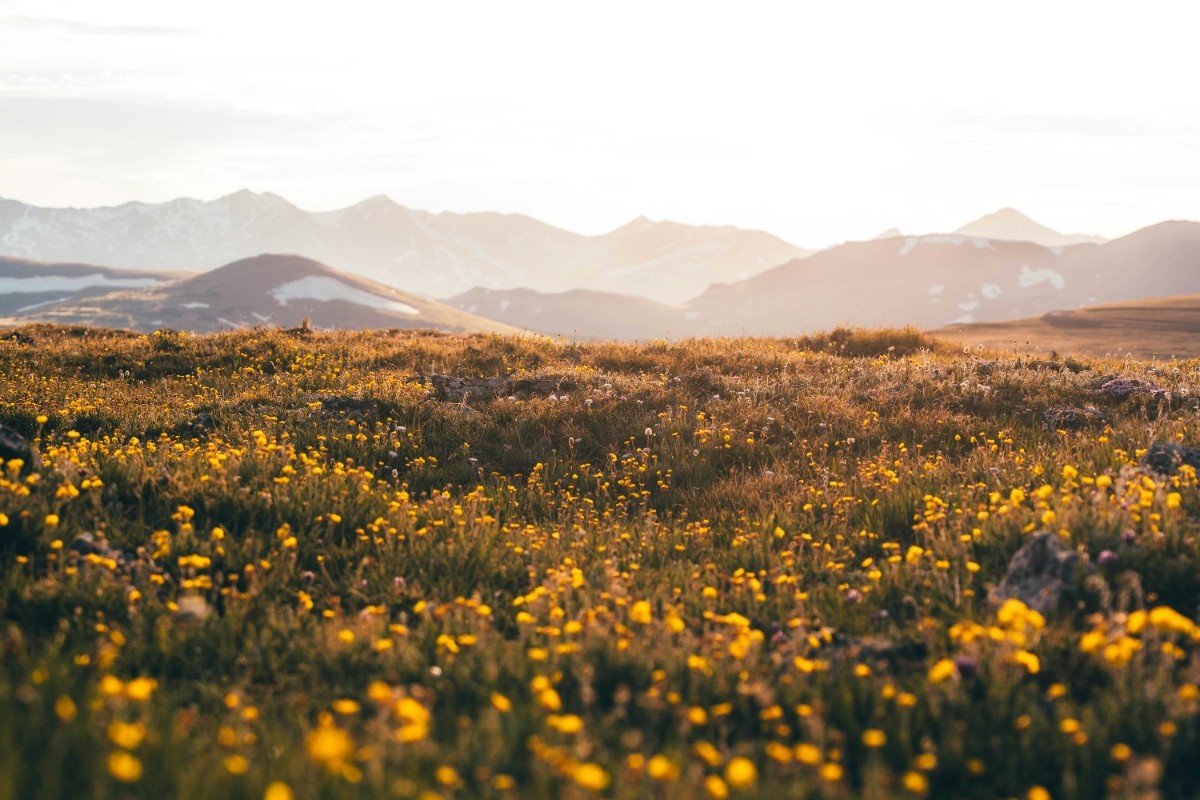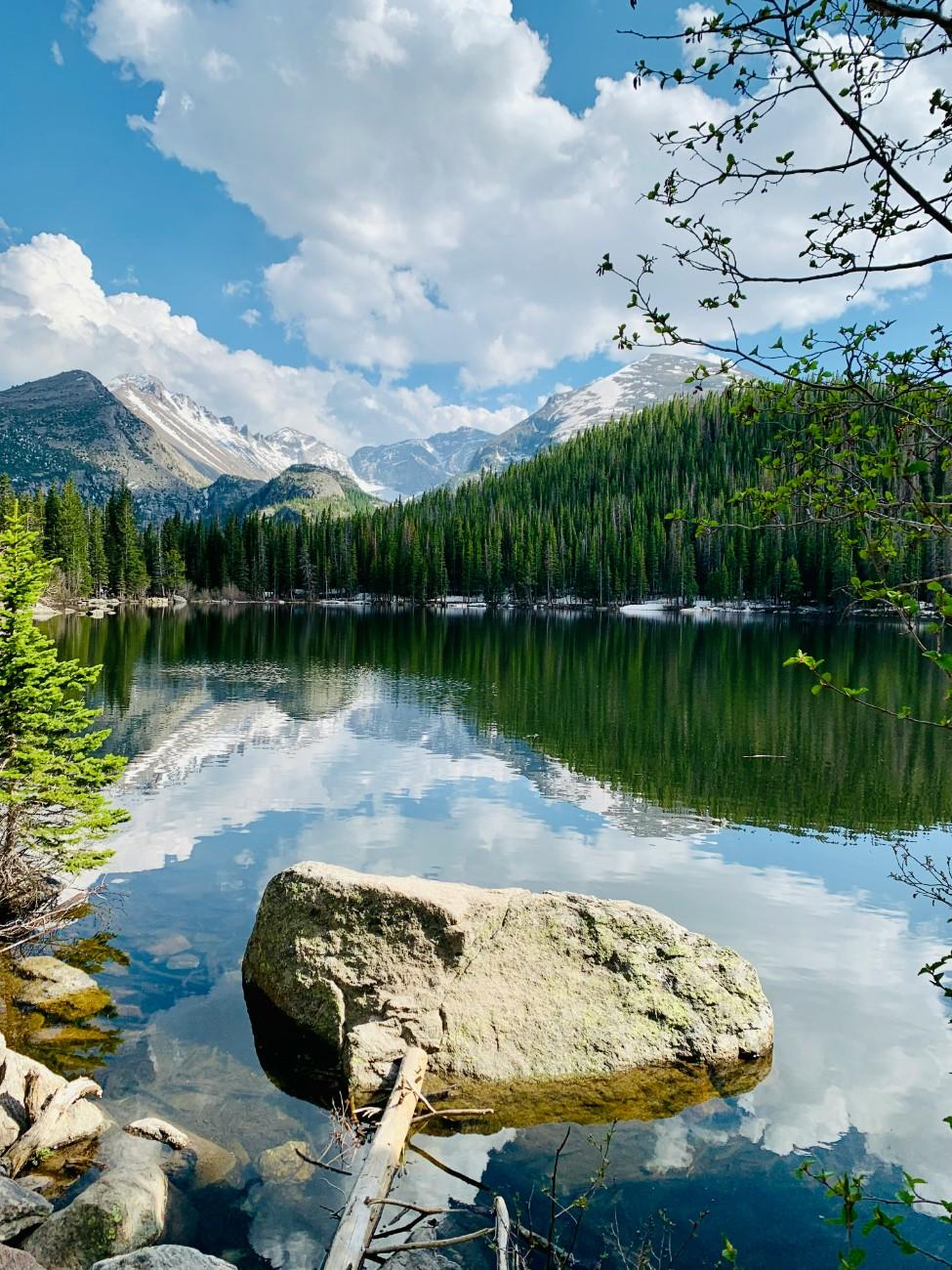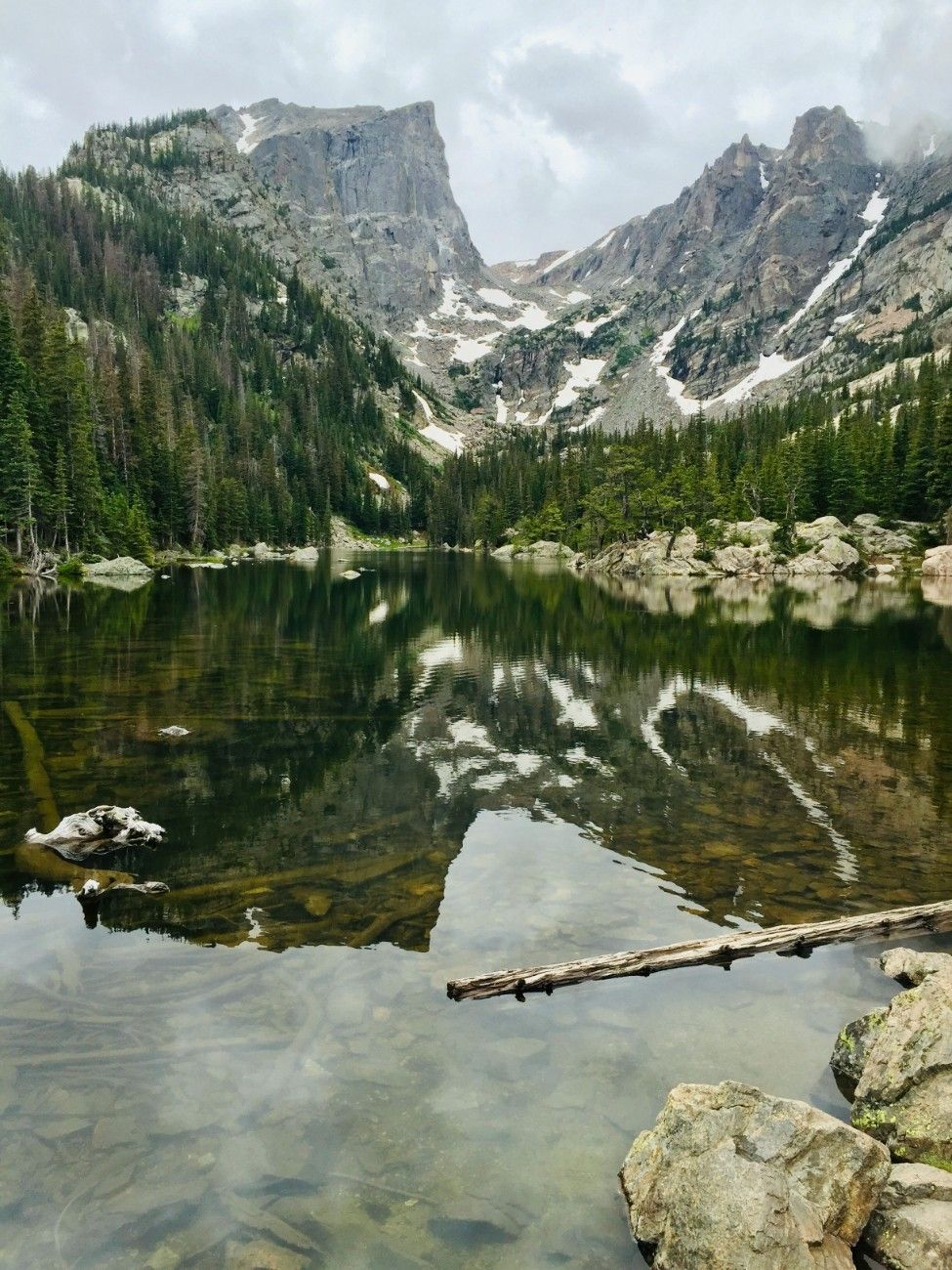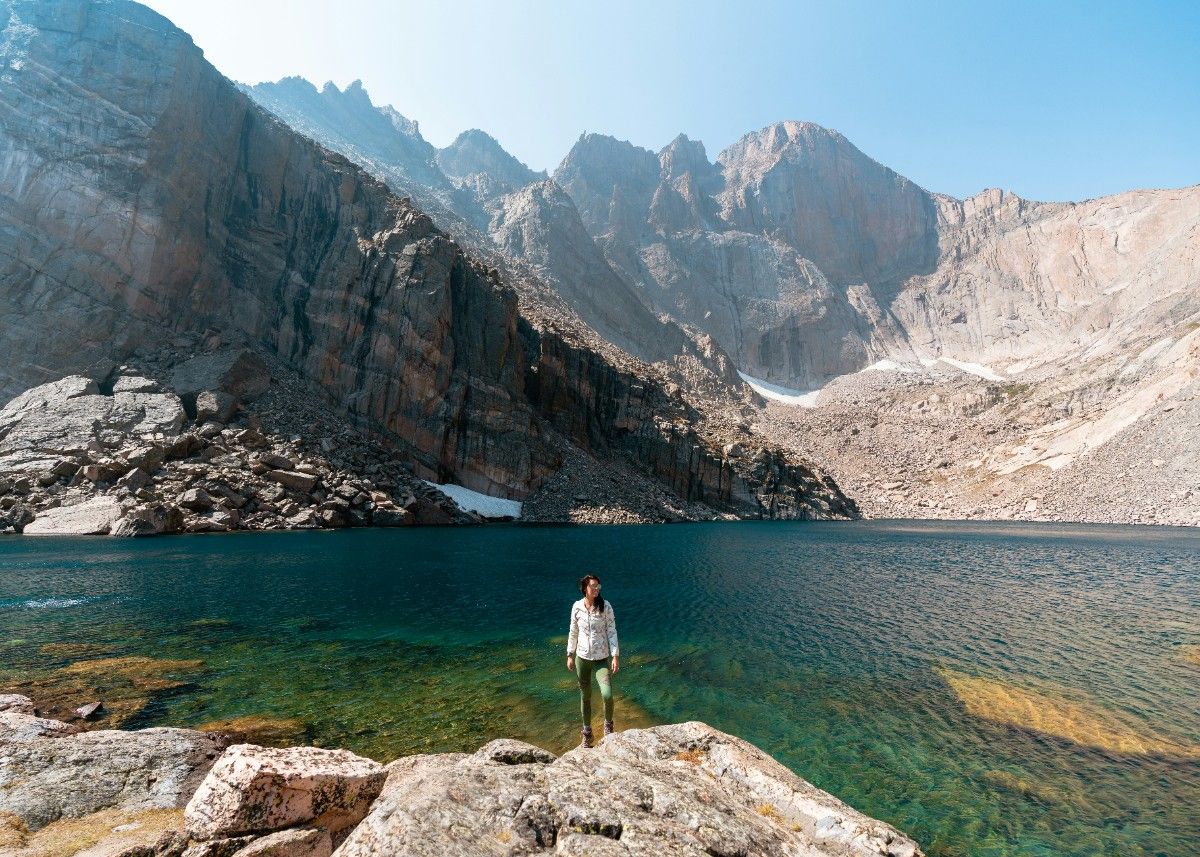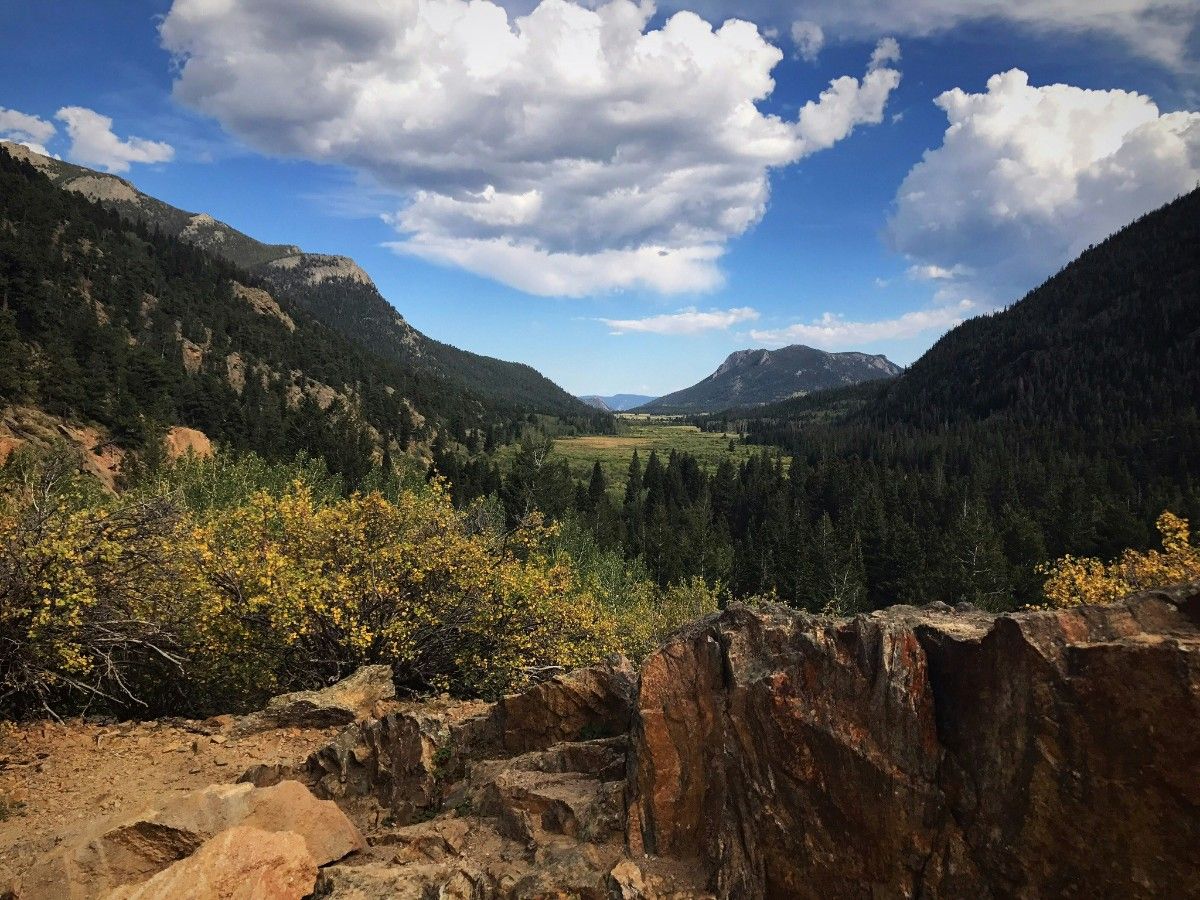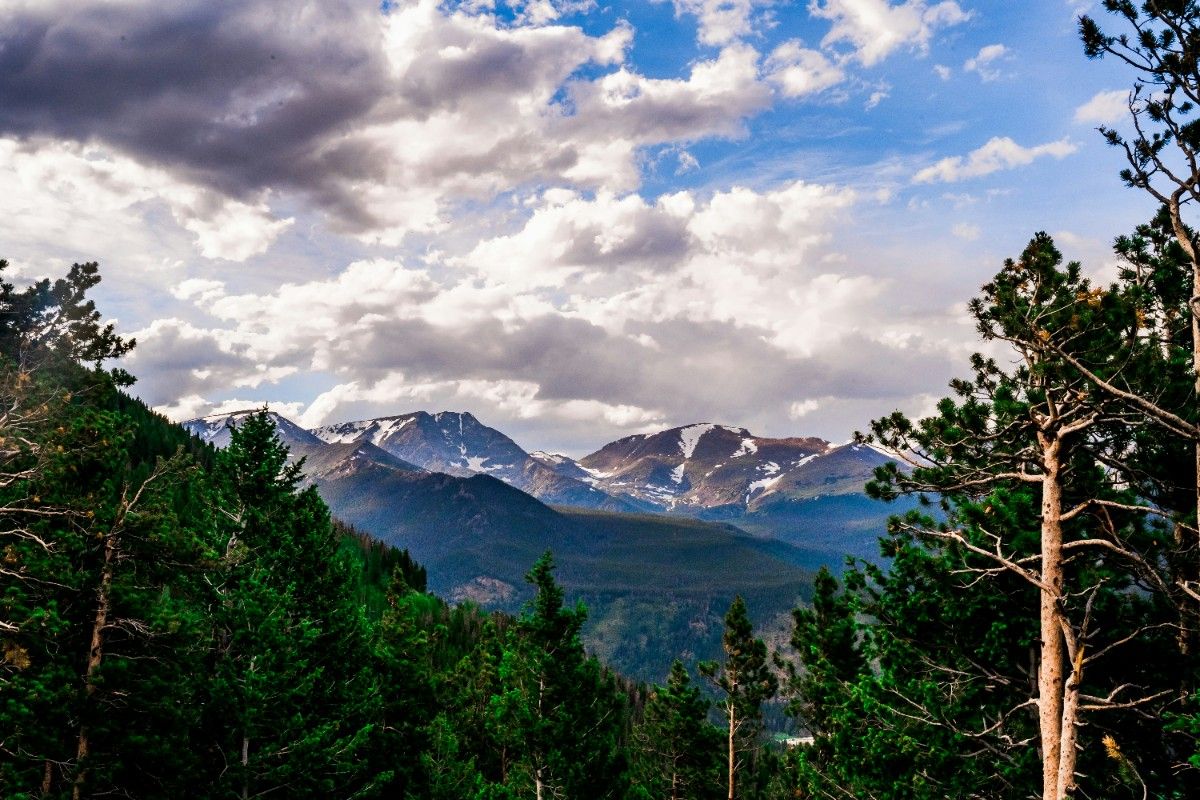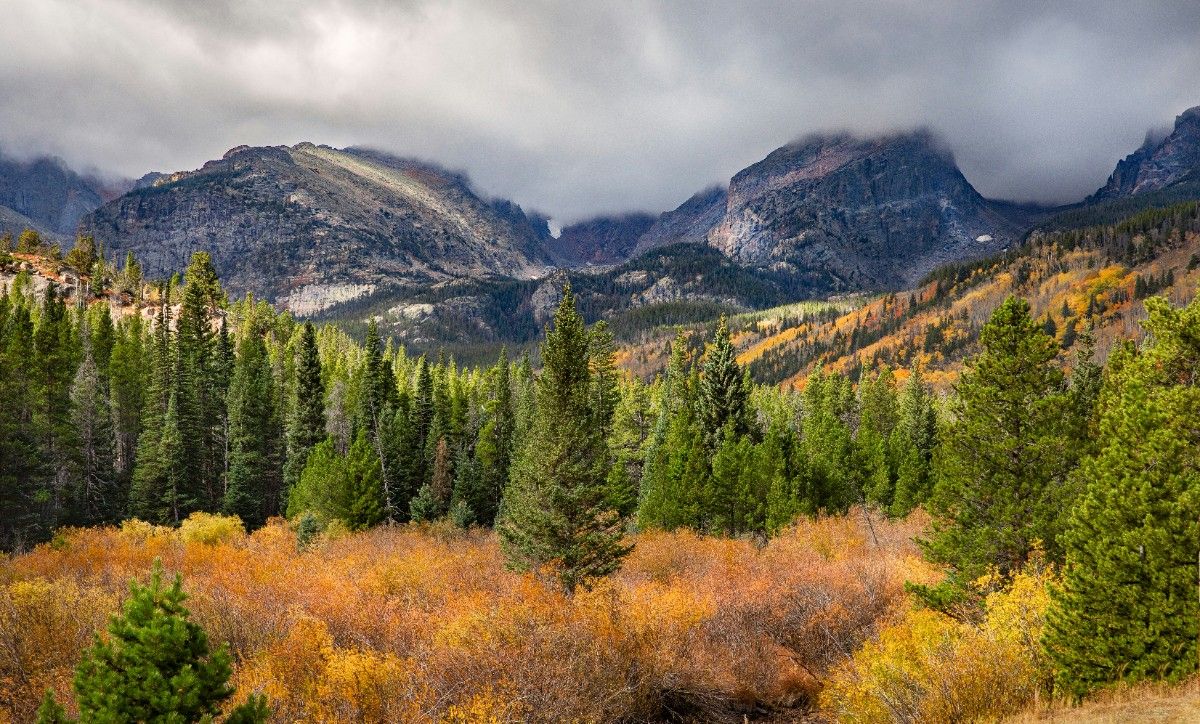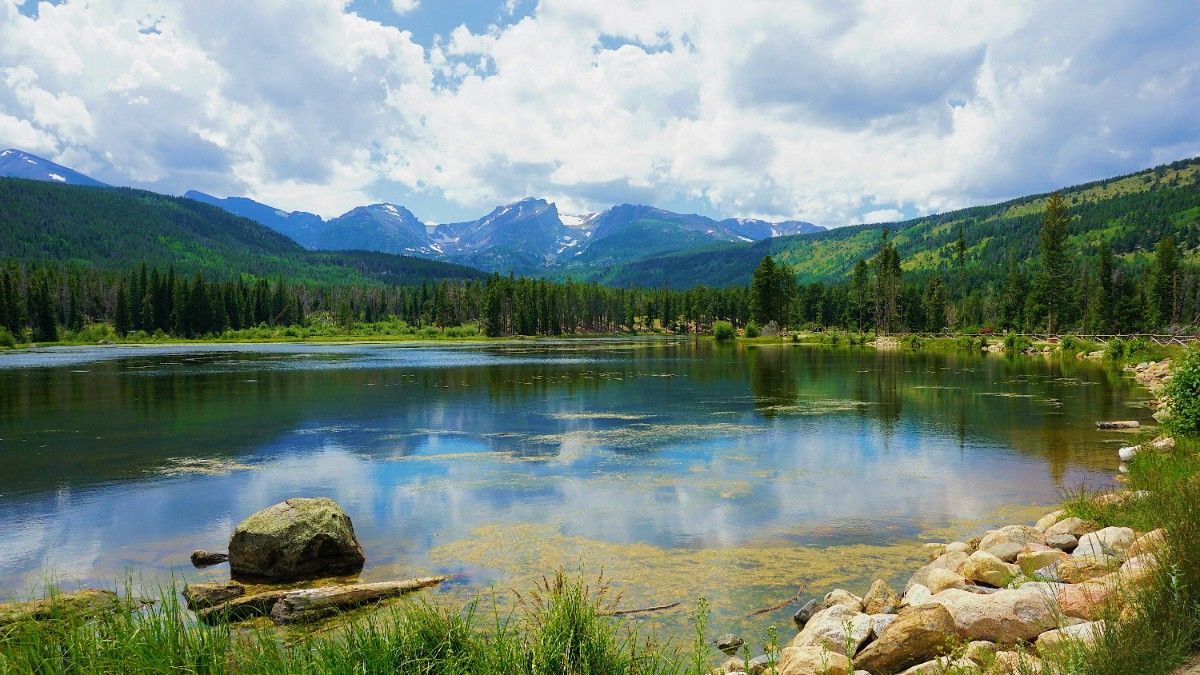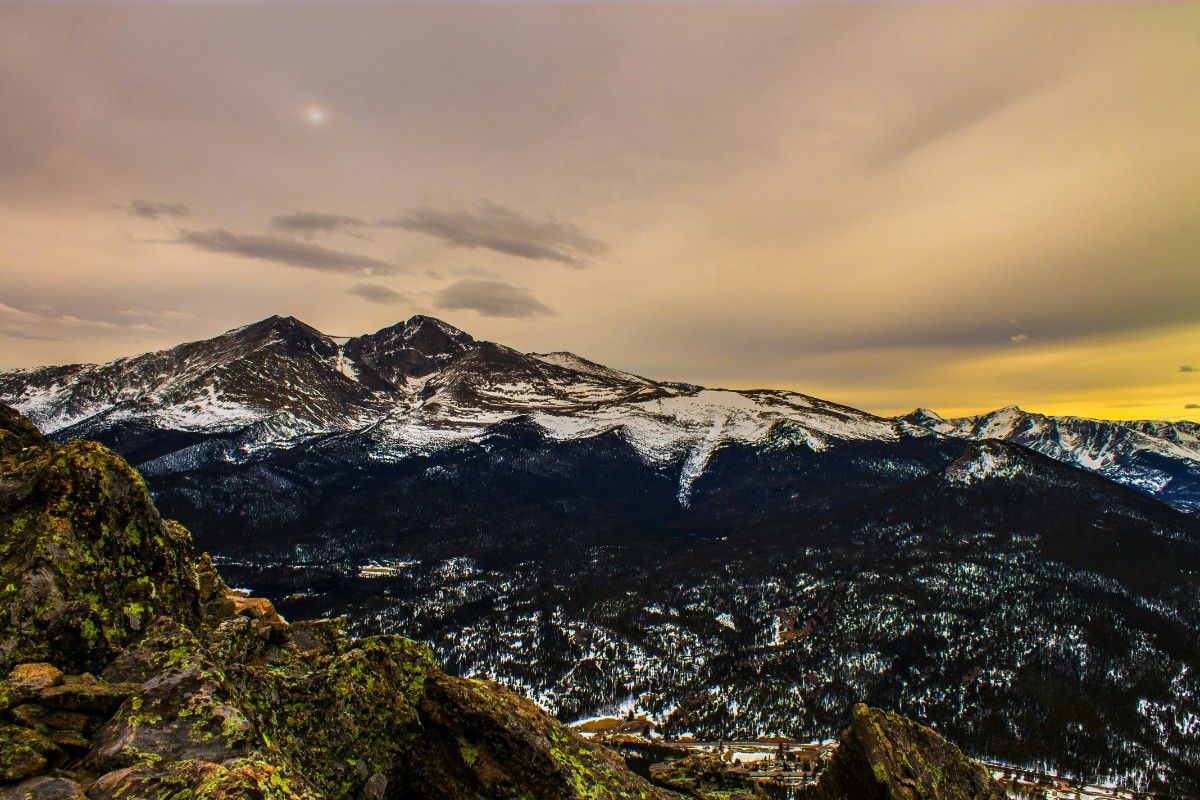Introduction to Rocky Mountain National Park
Overview of the Park
Rocky Mountain National Park, located in Colorado, USA, is a breathtaking natural wonder that attracts millions of visitors each year. Established in 1915, this national park encompasses 265,807 acres (107,564 hectares) of stunning landscapes, including majestic mountain ranges, pristine alpine lakes, lush forests, and expansive meadows. With elevations ranging from 7,860 feet (2,396 metres) to 14,259 feet (4,346 metres) at the summit of Longs Peak, Rocky Mountain National Park offers a diverse array of ecosystems and outdoor experiences for visitors to enjoy.
The park is home to an incredible variety of wildlife, including elk, bighorn sheep, black bears, and countless species of birds, making it a paradise for nature enthusiasts and wildlife photographers. Visitors can explore over 350 miles (563 kilometres) of hiking trails, ranging from easy nature walks to challenging backcountry treks, or engage in various outdoor activities such as fishing, rock climbing, and scenic drives. Rocky Mountain National Park also offers excellent opportunities for camping and lodging, with five established campgrounds and nearby accommodations like the Rocky Mountain National Park YMCA and the historic Stanley Hotel.
As one of America's most beloved national parks, Rocky Mountain National Park is dedicated to preserving its natural beauty and ecological integrity for future generations. Through conservation efforts, educational programs, and the promotion of environmental stewardship, the park aims to inspire visitors to appreciate and protect this awe-inspiring wilderness.
History and Establishment
The area that is now Rocky Mountain National Park has been inhabited by humans for thousands of years, with evidence of Native American presence dating back over 10,000 years. The Ute, Arapaho, and other indigenous tribes used the area for hunting, gathering, and spiritual purposes. In the mid-19th century, European-American settlers began to explore and settle in the region, attracted by the promise of gold, timber, and fertile land.
As the American conservation movement gained momentum in the early 20th century, there was growing interest in preserving the stunning landscapes and wildlife of the Rocky Mountains. In 1909, Enos Mills, a naturalist and entrepreneur, began advocating for the creation of a national park in the area. Mills' efforts, along with the support of local communities and conservation groups, led to the introduction of a bill in Congress to establish Rocky Mountain National Park.
On January 26, 1915, President Woodrow Wilson signed the bill into law, officially creating Rocky Mountain National Park. The park's initial boundaries encompassed 358.3 square miles (927.9 square kilometres), but subsequent expansions and land acquisitions have increased its size to the current 415 square miles (1,075 square kilometres).
Since its establishment, Rocky Mountain National Park has become a beloved destination for millions of visitors from around the world. The park has played a crucial role in preserving the natural and cultural heritage of the Rocky Mountains, while also providing opportunities for outdoor recreation, education, and scientific research.
Geological Formation and Landscape
Mountain Building and Uplift
The spectacular landscapes of Rocky Mountain National Park are the result of millions of years of geological processes, primarily driven by the forces of mountain building and uplift. The park is situated within the Rocky Mountains, a vast mountain range that spans from British Columbia, Canada, to New Mexico, USA. The formation of the Rocky Mountains began around 80-55 million years ago during the Laramide orogeny, a period of intense tectonic activity that resulted from the collision of the North American and Pacific plates.
As the tectonic plates collided, the Earth's crust was subjected to immense pressure, causing it to fold, fault, and uplift. This process, known as mountain building, gave rise to the towering peaks and rugged terrain that characterise the Rocky Mountains today. The uplift of the mountains was not a single event but rather a series of episodic uplifts that occurred over millions of years, with some areas experiencing more significant uplift than others.
The rocks exposed in Rocky Mountain National Park are primarily composed of ancient sedimentary layers that were deposited over a billion years ago when the area was covered by shallow seas. These sedimentary rocks, including sandstone, shale, and limestone, were subsequently buried, compressed, and heated, transforming them into harder, more resistant layers. As the mountains uplifted, these layers were exposed and subjected to the forces of erosion, which have sculpted the landscape into its current form.
Glaciation and Erosion
While mountain building and uplift are responsible for the overall structure of the Rocky Mountains, the intricate details of the landscape in Rocky Mountain National Park have been shaped by the powerful forces of glaciation and erosion. During the Pleistocene epoch, which began around 2.6 million years ago, the Earth experienced a series of ice ages that resulted in the formation of massive glaciers in the park.
These glaciers, some of which were over 1,000 feet (305 metres) thick, slowly moved across the landscape, carving U-shaped valleys, cirques, and other distinctive features. The park's numerous lakes, including the popular Bear Lake and Sprague Lake, were formed by glacial activity as the ice carved out depressions in the bedrock and left behind moraines that dammed the water.
As the climate warmed and the glaciers receded, the landscape was further shaped by the forces of erosion. Water, in the form of streams and rivers, has continued to carve the landscape, creating deep canyons and exposing layers of rock. The freeze-thaw cycle, in which water seeps into cracks in the rock and expands as it freezes, has also played a role in breaking down the rock and shaping the terrain.
Today, the geological formation and landscape of Rocky Mountain National Park continue to evolve, albeit at a much slower pace. The park's rugged peaks, glacial valleys, and cascading streams stand as a testament to the powerful forces that have shaped this awe-inspiring wilderness over millions of years.
Flora and Fauna
Diverse Plant Life
Rocky Mountain National Park is home to an incredible diversity of plant life, with over 1,000 species of plants found within its boundaries. The park's varied ecosystems, ranging from montane forests to alpine tundra, support a wide array of flora that have adapted to the unique conditions of the Rocky Mountains.
At lower elevations, visitors can explore lush montane forests dominated by ponderosa pine, Douglas fir, and quaking aspen. These forests are characterised by a rich understory of shrubs, wildflowers, and grasses, including species such as kinnikinnick, wild rose, and heartleaf arnica. As elevation increases, the montane forests give way to subalpine environments, where Engelmann spruce, subalpine fir, and limber pine dominate the landscape. Here, visitors may encounter species such as the Colorado columbine, the state flower of Colorado, and the delicate fairy slipper orchid.
Above the treeline, at elevations exceeding 11,000 feet (3,353 metres), lies the park's expansive alpine tundra. This harsh, wind-swept environment is home to a unique assemblage of hardy, low-growing plants that have adapted to the short growing seasons, intense UV radiation, and extreme temperature fluctuations. Visitors to the tundra may spot species such as the vibrant alpine forget-me-not, the cushion-forming moss campion, and the resilient alpine avens.
Throughout the park, wildflower enthusiasts can delight in the colourful displays of blooms that change with the seasons. In the spring and early summer, meadows and hillsides come alive with the vibrant hues of species such as the Rocky Mountain iris, the Indian paintbrush, and the alpine sunflower. As the seasons progress, new waves of wildflowers emerge, painting the landscape in a constantly evolving palette of colours.
Abundant Wildlife
Rocky Mountain National Park is renowned for its abundant and diverse wildlife, which includes over 60 species of mammals and 280 species of birds. The park's varied ecosystems provide habitat for a wide range of animals, from tiny pikas to majestic elk.
One of the park's most iconic species is the elk, also known as the wapiti. These large, powerful mammals can often be seen grazing in the park's meadows and valleys, particularly during the fall mating season, or rut, when bulls engage in dramatic displays of dominance to attract mates. Visitors to the park may also encounter mule deer, moose, and the elusive black bear, which roams the forested areas in search of food.
The park's rocky slopes and high-elevation meadows are home to several species of alpine mammals, including the sure-footed bighorn sheep and the playful yellow-bellied marmot. These animals have adapted to the challenging conditions of the alpine environment, with thick coats and specialised behaviours that allow them to survive the long, harsh winters.
Birdwatchers will find no shortage of avian life in Rocky Mountain National Park, with species ranging from the tiny, iridescent broad-tailed hummingbird to the majestic golden eagle. The park's forests and meadows are alive with the songs of mountain chickadees, hermit thrushes, and warbling vireos, while the alpine tundra is home to unique species such as the white-tailed ptarmigan and the brown-capped rosy-finch.
Other notable wildlife in the park includes the elusive mountain lion, the clever coyote, and the industrious beaver, which plays a crucial role in shaping the park's riparian ecosystems. With such an abundance of wildlife, Rocky Mountain National Park offers unparalleled opportunities for visitors to observe and appreciate the incredible diversity of life that thrives in this awe-inspiring wilderness.
Hiking and Outdoor Recreation
Hiking Trails for All Skill Levels
Rocky Mountain National Park is a hiker's paradise, offering over 350 miles (563 kilometres) of trails that cater to all skill levels and interests. Whether you're a casual nature lover or a seasoned backcountry enthusiast, the park has a trail that will suit your abilities and provide you with breathtaking views of the surrounding landscape.
For those seeking a gentle introduction to the park's beauty, there are numerous short, easy trails that offer a taste of the wilderness without requiring a significant time or fitness commitment. The Bear Lake Nature Trail, for example, is a 0.6-mile (0.96-kilometre) loop that circumnavigates the serene waters of Bear Lake, offering stunning views of the surrounding peaks and forests. Similarly, the Sprague Lake Trail is a flat, 0.9-mile (1.4-kilometre) loop that provides a peaceful setting for a leisurely stroll or a picnic.
More adventurous hikers can tackle the park's moderate trails, which offer a greater challenge and the opportunity to explore more remote areas of the wilderness. The Emerald Lake Trail, for instance, is a popular 3.6-mile (5.8-kilometre) round-trip hike that takes visitors past three stunning alpine lakes and provides breathtaking views of the surrounding peaks, including Hallett Peak and Flattop Mountain.
For experienced hikers and backpackers, Rocky Mountain National Park offers a network of challenging backcountry trails that lead to some of the park's most remote and spectacular destinations. The Longs Peak Trail, which climbs to the summit of the park's highest peak at 14,259 feet (4,346 metres), is a strenuous 15-mile (24-kilometre) round-trip hike that requires significant preparation, acclimatisation, and technical skills.
Regardless of your skill level, it is essential to come prepared when hiking in Rocky Mountain National Park. Weather conditions can change rapidly, and visitors should always carry appropriate clothing, water, food, and navigation equipment. It is also crucial to follow Leave No Trace principles and park regulations to help preserve the delicate ecosystems and ensure a safe and enjoyable experience for all visitors.
Other Outdoor Activities
In addition to hiking, Rocky Mountain National Park offers a wide range of other outdoor activities that allow visitors to immerse themselves in the beauty and majesty of the wilderness. From fishing and rock climbing to scenic drives and wildlife watching, there is something for everyone in this awe-inspiring national park.
Fishing enthusiasts will find ample opportunities to cast their lines in the park's numerous streams and lakes, which are home to a variety of fish species, including trout, salmon, and Arctic grayling. The park offers both lure and fly fishing, and anglers can choose from a range of settings, from the peaceful shores of alpine lakes to the rushing waters of mountain streams.
Rock climbing and bouldering are popular activities in Rocky Mountain National Park, with routes available for climbers of all skill levels. The park's granite cliffs and boulder fields offer a range of challenges, from beginner-friendly routes to advanced, multi-pitch climbs. Lumpy Ridge and Longs Peak are two of the park's most renowned climbing destinations, attracting climbers from around the world.
For those who prefer to experience the park's beauty from the comfort of their vehicle, Rocky Mountain National Park offers several scenic drives that provide stunning views of the surrounding landscape. The Trail Ridge Road, which reaches elevations of over 12,000 feet (3,658 metres), is a must-see for any visitor to the park, offering breathtaking vistas of the Rocky Mountains and the opportunity to spot wildlife along the way.
Finally, wildlife watching is one of the most popular and rewarding activities in Rocky Mountain National Park. The park's diverse ecosystems are home to an incredible array of animals, from majestic elk and bighorn sheep to playful marmots and elusive mountain lions. Whether you're exploring the park's meadows, forests, or alpine tundra, there are endless opportunities to observe and photograph the park's wild residents in their natural habitats.
Wildlife Watching and Photography
Prime Locations for Wildlife Viewing
Rocky Mountain National Park is a wildlife enthusiast's dream, offering countless opportunities to observe and photograph the park's diverse array of animals in their natural habitats. With over 60 species of mammals and 280 species of birds, the park is home to an incredible variety of wildlife that can be enjoyed by visitors of all ages and skill levels.
One of the best places to spot wildlife in the park is in the montane meadows and valleys, particularly at dawn and dusk when animals are most active. Moraine Park and Horseshoe Park are two popular destinations for elk viewing, especially during the fall mating season, or rut, when bull elk gather to compete for the attention of females. During this time, visitors can witness the impressive spectacle of bull elk bugling and engaging in dramatic displays of dominance, all while surrounded by the stunning backdrop of the Rocky Mountains.
Another prime location for wildlife watching is the park's alpine tundra, which is home to a unique assemblage of animals that have adapted to the harsh, high-elevation environment. Here, visitors can spot species such as the American pika, a small, rabbit-like mammal that lives among the rocky slopes, and the white-tailed ptarmigan, a well-camouflaged bird that changes its plumage to match the seasons. Marmots and bighorn sheep are also common sights in the tundra, and lucky visitors may even catch a glimpse of a coyote or a fox.
For birdwatchers, Rocky Mountain National Park is a true paradise, with a wide variety of species that can be found throughout the park's diverse habitats. The montane forests are home to species such as the Steller's jay, the mountain chickadee, and the red-breasted nuthatch, while the alpine tundra is a breeding ground for the brown-capped rosy-finch and the horned lark. Raptors, including eagles, hawks, and owls, can also be seen soaring over the park's peaks and valleys, searching for prey.
Tips for Photographing Wildlife
Wildlife photography is a popular and rewarding activity in Rocky Mountain National Park, but it requires patience, skill, and a respect for the animals and their habitats. Whether you're a beginner or a seasoned photographer, there are a few tips that can help you capture stunning images of the park's wild residents.
First and foremost, it is essential to maintain a safe and respectful distance from wildlife at all times. Not only is it illegal to approach or disturb animals in the park, but it can also be dangerous for both you and the animal. Use a telephoto lens to capture close-up images from a distance, and never attempt to feed or lure animals with food.
When photographing wildlife, it is also important to be aware of your surroundings and to minimise your impact on the environment. Stay on designated trails and avoid trampling vegetation or disturbing nesting sites. Use natural blinds, such as trees or rocks, to conceal yourself and avoid startling animals with sudden movements or loud noises.
Timing is another key factor in successful wildlife photography. Early morning and late evening are often the best times to capture images of animals, as they are more active during these cooler periods. Be prepared to wait patiently for the perfect shot, and don't be discouraged if an animal doesn't cooperate or if the lighting isn't ideal.
Finally, remember to adjust your camera settings to account for the unique challenges of wildlife photography. Use a fast shutter speed to freeze motion, and a wide aperture to create a shallow depth of field and isolate your subject from the background. Experiment with different compositions and angles to create dynamic and engaging images that showcase the beauty and majesty of Rocky Mountain National Park's incredible wildlife.
Camping and Lodging
Campgrounds in Rocky Mountain National Park
Rocky Mountain National Park offers a variety of camping options for visitors who want to immerse themselves in the park's stunning natural beauty. With five established campgrounds and numerous backcountry sites, there are plenty of opportunities to spend the night under the stars and wake up to the sounds of the wilderness.
The park's five established campgrounds are located throughout the park and offer a range of amenities and experiences. Aspenglen, Glacier Basin, and Moraine Park campgrounds are located on the east side of the park, while Timber Creek campground is situated on the west side. Each campground has its own unique character and offers a different level of accessibility and privacy.
Moraine Park campground, for example, is the largest and most popular campground in the park, with 244 sites that can accommodate tents, trailers, and RVs. Located in a beautiful montane meadow, this campground offers stunning views of the surrounding peaks and is a great base camp for exploring the park's many trails and attractions.
For a more rustic and secluded experience, visitors can try one of the park's smaller campgrounds, such as Aspenglen or Timber Creek. These campgrounds offer fewer amenities but provide a greater sense of solitude and immersion in the wilderness.
In addition to the established campgrounds, Rocky Mountain National Park also offers wilderness camping for those who want to experience the park's backcountry. Backcountry camping requires a permit and involves hiking or horseback riding to remote sites that are not accessible by car. This type of camping is a great way to escape the crowds and experience the park's pristine wilderness, but it also requires careful planning and preparation.
Lodging Options Near Rocky Mountain National Park
For visitors who prefer a more comfortable and convenient lodging experience, there are several options available near Rocky Mountain National Park. The nearby towns of Estes Park and Grand Lake offer a variety of hotels, motels, lodges, and vacation rentals that cater to park visitors.
One of the most popular lodging options is the historic Stanley Hotel, located in Estes Park. This iconic hotel, which inspired Stephen King's novel "The Shining," offers luxurious accommodations and stunning views of the surrounding mountains. The hotel also features a variety of dining options, a spa, and a range of activities and tours.
Another great lodging option is the Rocky Mountain National Park YMCA of the Rockies, which offers a variety of cabins and lodges in a beautiful mountain setting. The YMCA is located just outside the park and offers a range of activities and programs for visitors of all ages, including hiking, fishing, horseback riding, and naturalist-led programs.
For a more intimate and personalised lodging experience, visitors can choose from a variety of bed and breakfasts and vacation rentals in the area. These options offer a range of amenities and styles, from cosy cabins to luxurious mountain homes, and provide a great way to experience the local culture and hospitality.
Regardless of your lodging preferences, it is important to book your accommodations well in advance, especially during peak season. Many of the park's campgrounds and nearby lodging options fill up quickly, so it is best to plan ahead to ensure that you have a comfortable and enjoyable place to stay during your visit to Rocky Mountain National Park.
Conservation and Environmental Stewardship
Protecting the Park's Ecosystems
As one of America's most beloved national parks, Rocky Mountain National Park is dedicated to preserving its natural beauty and ecological integrity for generations to come. The park's diverse ecosystems, ranging from lush forests to alpine tundra, support an incredible variety of plant and animal life that is found nowhere else on Earth.
To protect these fragile ecosystems, the park has implemented a range of conservation and management strategies that aim to minimise human impact and maintain the natural balance of the wilderness. One of the key challenges facing the park is the impact of invasive species, which can outcompete native plants and disrupt the delicate balance of the ecosystem.
To combat this threat, the park has established a rigorous monitoring and control program that involves identifying and removing invasive species before they can become established. This work is carried out by a dedicated team of park staff and volunteers who are trained to identify and safely remove invasive plants using a variety of methods, including manual removal and targeted herbicide application.
Another major conservation challenge facing Rocky Mountain National Park is the impact of climate change on the park's ecosystems. As temperatures rise and precipitation patterns shift, many of the park's plant and animal species are struggling to adapt to the changing conditions. To help mitigate these impacts, the park is working to reduce its carbon footprint and promote sustainable practices, such as using renewable energy and reducing waste.
The park is also conducting research to better understand the effects of climate change on its ecosystems and to develop strategies for helping species adapt and survive in a changing world. This work involves monitoring key indicators of ecosystem health, such as plant phenology and animal migration patterns, and using this data to inform conservation and management decisions.
Promoting Environmental Stewardship
In addition to its own conservation efforts, Rocky Mountain National Park is also committed to promoting environmental stewardship among its visitors and the wider community. The park recognises that the future of its ecosystems depends on the actions and choices of individuals, and that by educating and inspiring people to care for the environment, it can help ensure the long-term health and resilience of the wilderness.
One of the key ways that the park promotes environmental stewardship is through its ranger-led programs and educational offerings. These programs, which range from guided hikes to campfire talks, provide visitors with an opportunity to learn about the park's natural and cultural history, and to gain a deeper appreciation for the importance of conservation and stewardship.
The park also offers a range of educational resources and materials, including exhibits, brochures, and online content, that provide visitors with information and tips on how to minimise their impact on the environment while enjoying the park's many attractions. These resources cover topics such as Leave No Trace principles, wildlife safety, and sustainable travel practices, and are designed to help visitors make informed and responsible choices while exploring the wilderness.
Another important aspect of the park's environmental stewardship efforts is its partnerships with local communities, organisations, and businesses. By working collaboratively with these stakeholders, the park is able to expand its reach and impact, and to engage a wider audience in the important work of conservation and stewardship.
For example, the park has partnered with local schools and youth organisations to develop educational programs and service-learning projects that engage young people in hands-on conservation work and environmental education. These programs not only help to instil a love and respect for nature in the next generation, but also provide valuable skills and experiences that can inspire a lifetime of environmental stewardship.
Visiting Rocky Mountain National Park
Planning Your Trip
Visiting Rocky Mountain National Park is an unforgettable experience that offers something for everyone, from casual nature lovers to experienced outdoor enthusiasts. To make the most of your visit, it is important to plan ahead and be prepared for the unique challenges and opportunities of exploring this incredible wilderness.
One of the first things to consider when planning your trip is the time of year you want to visit. The park is open year-round, but the best time to visit depends on your interests and activities. Summer is the most popular season, with warm temperatures and long days that are perfect for hiking, camping, and wildlife watching. However, this is also the busiest time of year, with large crowds and limited availability for campgrounds and lodging.
Fall is another great time to visit the park, with cooler temperatures, stunning fall foliage, and fewer crowds. This is also the best time to witness the elk rut, when bull elk gather to compete for mates and fill the air with their haunting bugles. Winter is a magical time in the park, with snow-covered landscapes and opportunities for cross-country skiing, snowshoeing, and other winter sports. However, many of the park's roads and facilities are closed during this time, so it is important to check the park's website for current conditions and closures.
When planning your trip, it is also important to consider your accommodations and transportation options. The park has five established campgrounds that offer a range of amenities and experiences, from tent sites to RV hookups. These campgrounds fill up quickly, especially during peak season, so it is important to make reservations well in advance.
If camping is not your style, there are also several lodging options available near the park, including hotels, motels, and vacation rentals. These options range from rustic cabins to luxurious mountain lodges, and offer a range of amenities and services.
Making the Most of Your Visit
Once you have planned your trip and arrived at Rocky Mountain National Park, there are endless opportunities for exploration and adventure. To make the most of your visit, it is important to be prepared and to follow some basic guidelines for safety and stewardship.
One of the best ways to experience the park is through its extensive network of hiking trails, which range from easy nature walks to strenuous backcountry treks. Before setting out on any hike, it is important to check the park's website or visitor centres for current trail conditions, closures, and advisories. It is also important to bring plenty of water, food, and appropriate clothing and gear for the conditions, and to follow Leave No Trace principles to minimise your impact on the environment.
Another great way to experience the park is through its ranger-led programs and educational offerings. These programs, which are offered throughout the year, provide visitors with an opportunity to learn about the park's natural and cultural history, and to gain a deeper appreciation for the importance of conservation and stewardship. From guided hikes to campfire talks, there is something for everyone in the park's educational programs.
For those interested in wildlife watching and photography, Rocky Mountain National Park offers endless opportunities to observe and capture the park's incredible diversity of animal life. From the majestic elk and bighorn sheep to the elusive mountain lion and black bear, the park is home to an incredible variety of wildlife that can be observed from a safe and respectful distance. To maximise your chances of spotting wildlife, it is best to visit during the early morning or late evening hours, when animals are most active, and to bring binoculars or a spotting scope to help you get a closer look.
Finally, no visit to Rocky Mountain National Park is complete without taking some time to simply relax and soak in the incredible beauty and serenity of this majestic wilderness. Whether you are watching the sunset over the mountains, listening to the sound of a bubbling stream, or simply taking a moment to breathe in the fresh mountain air, the park offers a chance to connect with nature in a way that is truly unforgettable.
Related Articles

Let us know you agree to cookies
We use marketing, analytical and functional cookies as well as similar technologies to give you the best experience. Third parties, including social media platforms, often place tracking cookies on our site to show you personalised adverts outside of our website.
We store your cookie preferences for two years and you can edit your preferences via ‘manage cookies’ or through the cookie policy at the bottom of every page. For more information, please see our cookie policy.
